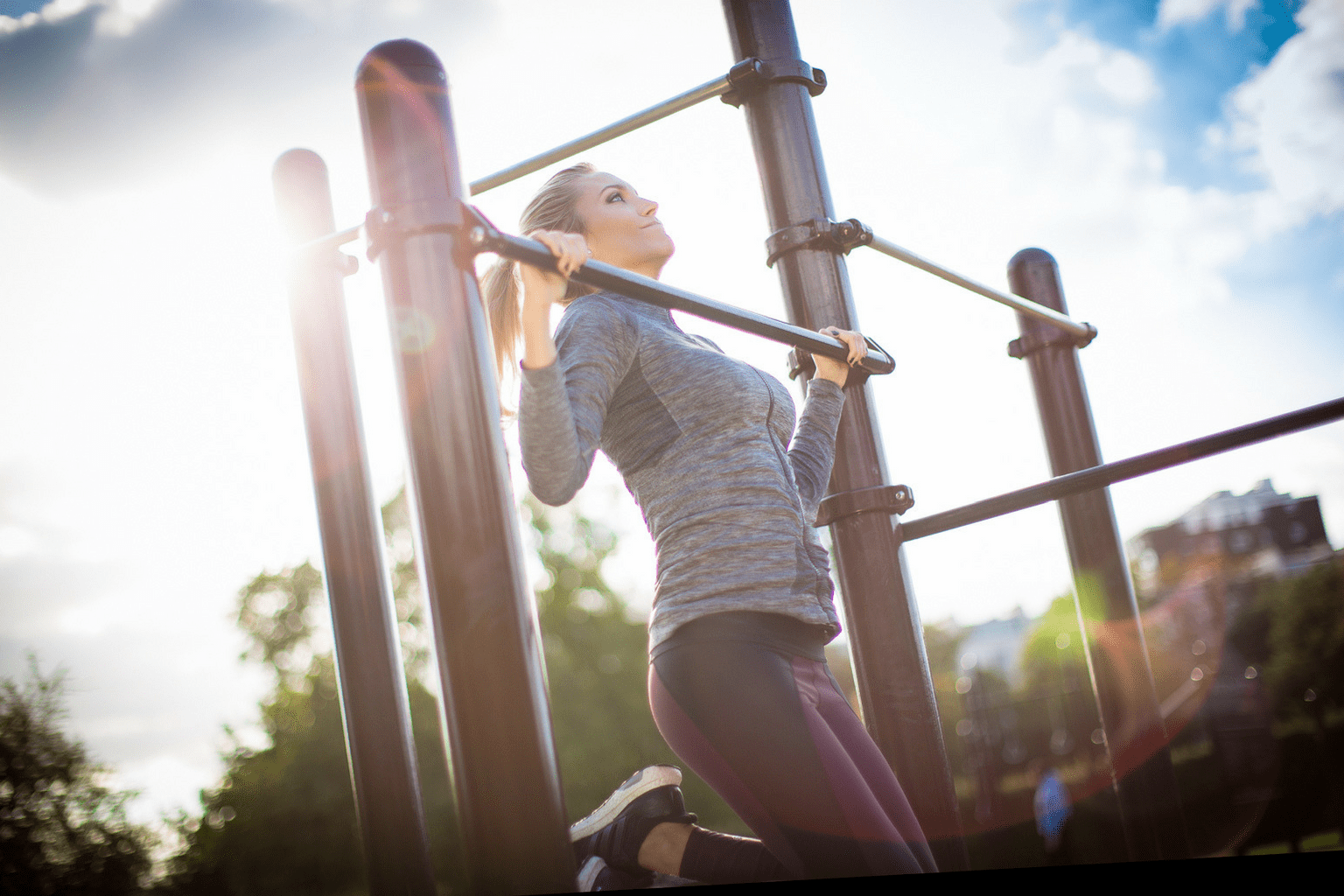
Women’s upper body strength is not as easy to develop as, for someone with testosterone running through their system. Still through smart training one can achieve chiseled upper back, shoulder and burn fat.
To perform a pull-up, you need to place your hands on a raised bar using an overhand grip, arms fully extended and feet off the floor. Using the muscles in your arms and back, pull yourself up until your chin passes the bar. Then the body is lowered until the arms are straight, and the exercise is repeated.
Men and women who can do pull ups tend to have a combination of strength, low body fat and shorter stature. Women due to lower levels of testosterone, typically develop less muscle than men. In addition, they can’t lose as much fat. No need to get disappointed and give up.
Top Tips for Managing Pull-Ups:

Try pull-ups with assistance. It might sound like stating the obvious, but you won’t get better at pull-ups without doing pull-ups. Start with assisted pull-ups using a band. Try using elastic bands instead of assisted pull-up machines to build up strength; bands force you to engage your core and lower body. To use, loop the band around a pull-up bar and place one foot into the band to help lighten the load. Use a box or bench to reach the band.
- Understand the movement. Start with arms fully extended, from a dead hang, and pull yourself up until your chin is over the bar.
- Go slow. Beginners should start with assisted pull-ups once a week for three to four weeks, aiming for 10reps to build up muscle endurance and to get used to the movement.
- Challenge yourself. As you get stronger, decrease the assistance by using a thinner band with less resistance, lower the number of reps and work up to practicing three days a week.

- Keep rotating. Practice chin-ups, with palms facing in, and flexed arm hangs, in which you start with your chin over the bar and slowly lower yourself. Chin-ups allow you to engage additional muscles in the forearms and biceps, making it slightly easier than a standard pull-up, which is a lat-heavy exercise. Combining the different exercises will help prevent overuse injuries.
- Use your whole body. Pull-ups are a full-body workout. Activate your core — abs, back and glutes — as well as your arms.
- Don’t lose hope. Note, progress will be slow. For many women, it could take weeks, months or more than a year to get that first pull-up.
- Celebrate. When you finally get over that bar, there’s nothing wrong with doing a little happy dance. Then get back up there and go for a second one.
Pull Ups involve some of the biggest muscle groups in your body. Remember, More muscle worked = Bigger calorie expenditure. Pull Ups are one of the best “bang for your buck exercises” increasing strength, metabolic demands, improving V-Taper and posture.
Ref: washingtonpost.com
Disclaimer
The Content is not intended to be a substitute for professional medical advice, diagnosis, or treatment. Always seek the advice of your physician or other qualified health provider with any questions you may have regarding a medical condition.



